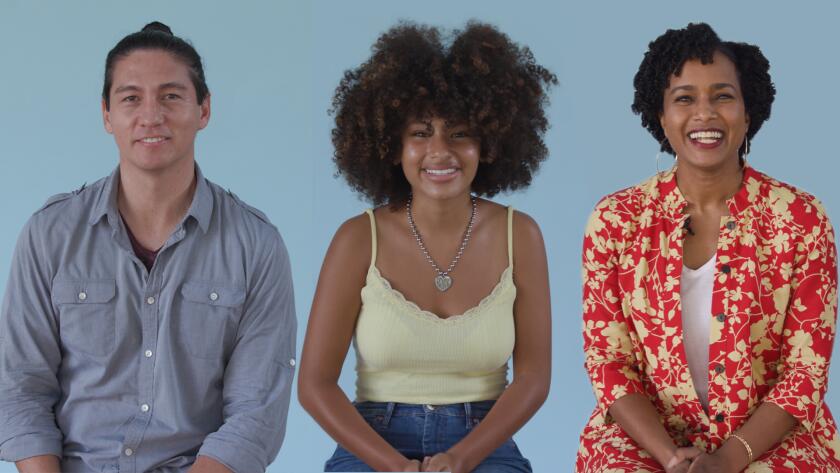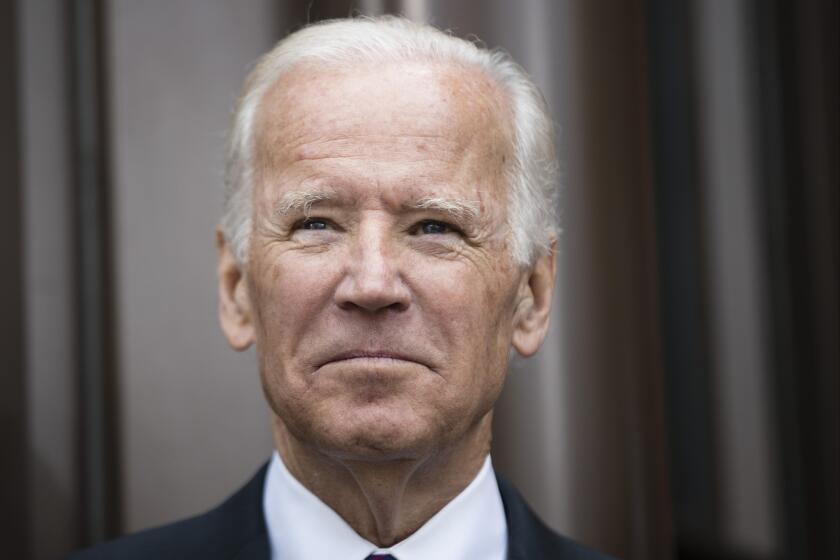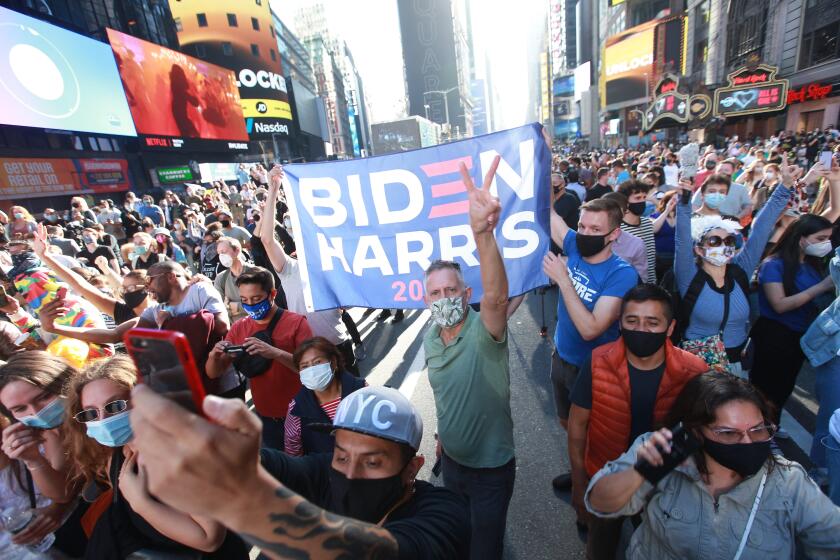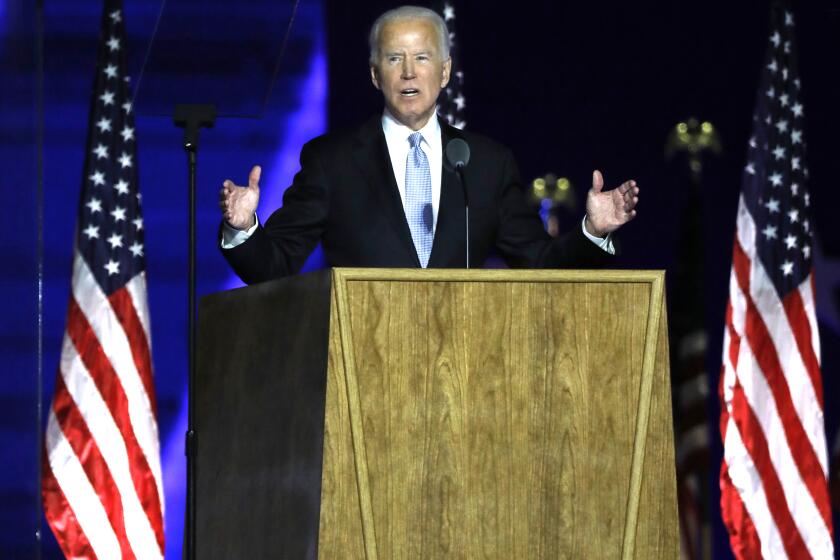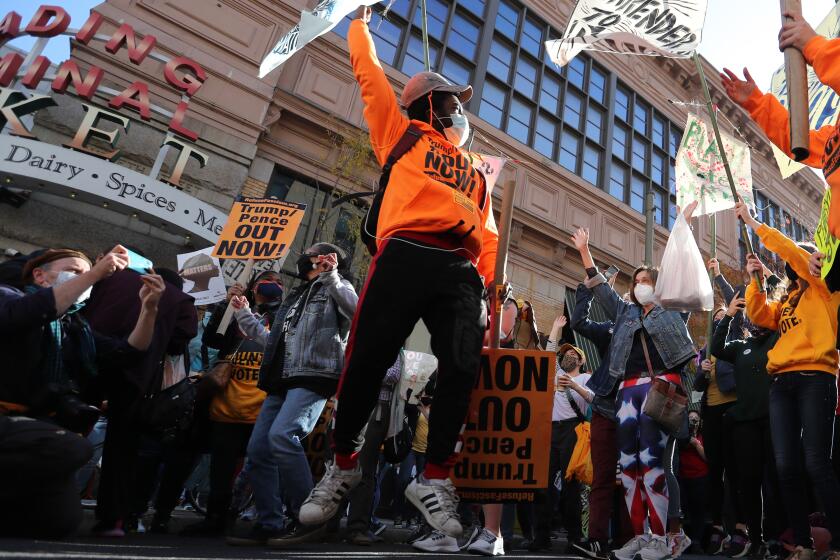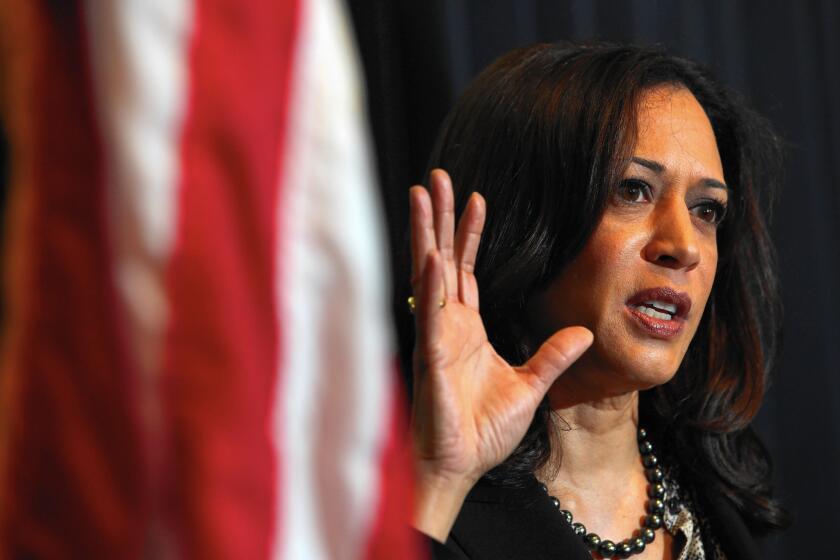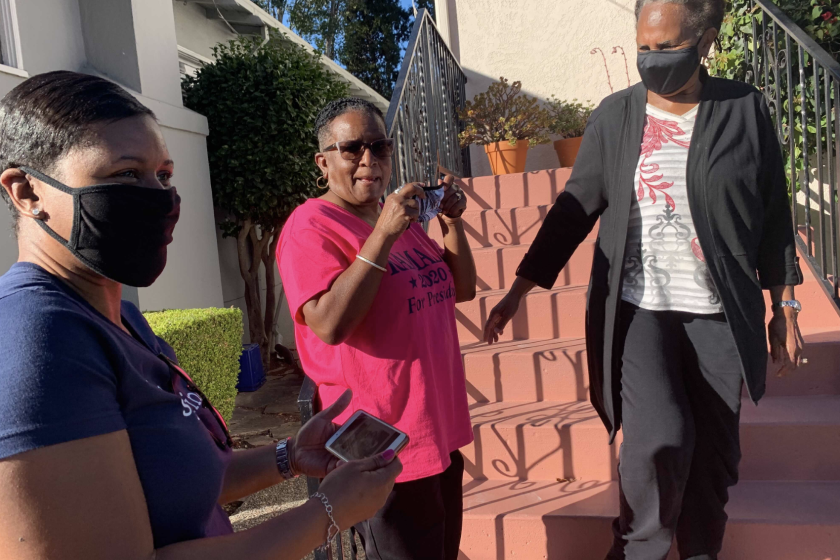Kamala Harris makes history many times over as vice president-elect
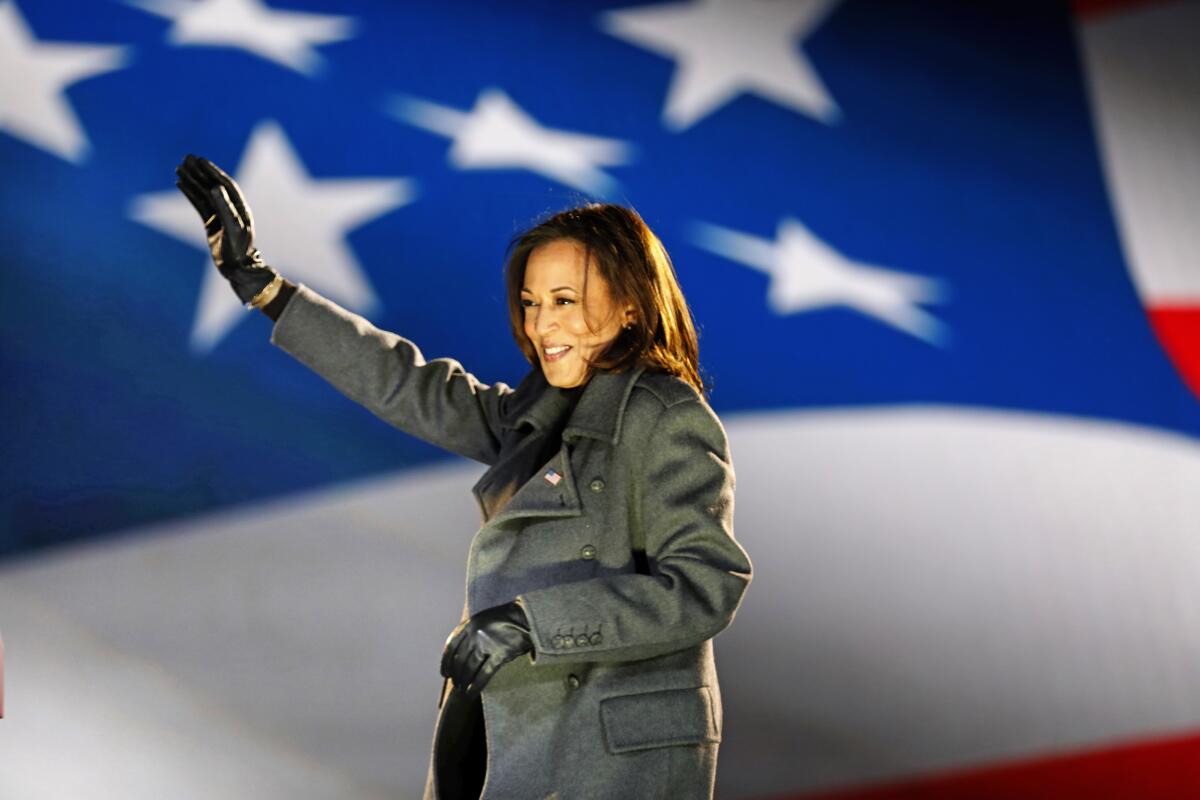
- Share via
With her election to the second-highest post in the nation, Kamala Harris has secured her place in history as a first — several times over.
The first woman to be vice president. First Black person. First Asian American.
With each boundary broken, Harris, California’s junior senator, established herself as a new face of American political power, one reflective of a broad cross-section of the population that for much of our history did not see itself in the nation’s leaders.
“My 9-year-old will believe for the rest of her life that there is no ceiling for Black girls,” said Lateefah Simon, a Bay Area-based civil rights advocate whom Harris has mentored for nearly 20 years. “Her best friend, who is a first-generation Latina, ... will see the vice president of the United States holding up the experiences of her mother, of this young girl’s mother, of the migrant experience.”
- Share via
On Saturday, Harris acknowledged the many eyes upon her as she spoke for the first time as vice president-elect.
“Every little girl watching tonight sees this as a country of possibilities,” Harris said.
Wearing suffragist white and occupying the unorthodox speaking slot before her running mate, President-elect Joe Biden, Harris made a forceful prediction: “While I may be the first woman in this office, I will not be the last.”
America has reimagined what leadership looks like before, most profoundly with the election 12 years ago of Barack Obama, the country’s first Black president. But what followed — Hillary Clinton’s inability to shatter the gender barrier, the fraught racial relations of the Trump era — made the prospect of electing a woman, much less a woman of color, to national office an exceedingly tall order.
Now the hard work of rebuilding our democracy and economy begins.
“In a sense, it is the first time in American history that the election of the vice president would be more historic than the election of the president,” said Joel Goldstein, law professor emeritus at St. Louis University and an expert on the vice presidency. “It crashes a ceiling.”
There was remarkably little buildup to the milestone. Instead, it was a bit lost in the drawn-out vote count, the last flourish in an over-the-top election season.
Joe Biden was elected the 46th president of the United States when Pennsylvania delivered the electoral votes he needed to capture the White House.
For Harris, 56, her win marks a new height in her turbocharged trajectory from local to state to national politics. It represents a recovery from the setback of her ill-fated presidential primary campaign and positions her as a standard-bearer of the Democratic Party, second only to Joe Biden, her governing partner.
The oldest daughter of a breast cancer researcher from India and an economist from Jamaica, Harris was born in Oakland and raised in Berkeley at a time of racial and societal upheaval. Her parents, who divorced when she was 7, met at a civil rights rally and Harris was in the second class of students participating in a busing program to integrate Berkeley schools.
Her childhood was a cultural pastiche — a soundtrack of Aretha Franklin belting gospel music and her mother, Shyamala Gopalan, singing Carnatic music, a classical style of southern India. Among her enduring childhood influences were her maternal grandfather, an Indian civil servant who taught her to play poker on her visits to Chennai, and her first-grade teacher, a Black woman named Frances Wilson, who attended her law school graduation.
After spending her middle and high school years in Montreal, Harris attended Howard University, a historically Black institution in Washington, and then got her law degree at UC Hastings College of the Law in San Francisco. After working as a prosecutor, she won her first elected office in 2003 as San Francisco district attorney. She then had three successful statewide campaigns: two for California attorney general and, in 2016, for U.S. Senate.
Winning election may prove to have been the easy part for a President Biden. Can he achieve an ambitious agenda and hold together the Democratic Party?
The desire to go to D.C. surprised some in her circle. When she called Simon to share her plans, her mentee was puzzled that Harris would willingly trade an executive position in the nation’s most populous state to be one of 100 senators.
“She said, ‘I’m going to run for Senate because, Lateefah, as an A.G. and ... as D.A., we had to follow the law. And some laws need to be rewritten,’” Simon recounted.
Harris launched her presidential bid in January 2019 with a flashy mega-sized rally in Oakland. But her campaign faltered, as she struggled to differentiate herself from the crowded Democratic field. She dropped out in December, before any nominating contests were held.
While some of Harris’ woes were self-inflicted — muddled policy stances and a campaign beset with infighting — she also suffered electability concerns from Democratic primary voters. Those anxieties echoed the questions about Obama’s viability in 2008. But in 2020, fears about the persistence of racism and misogyny among the electorate were especially acute.
“There are still unconscious and conscious biases of what leadership looks like and I think that’s what played out in the Democratic primary process,” said Glynda Carr, president of Higher Heights for America, an advocacy group supporting Black women in politics. “We started with the most diverse stage and reverted to our comfort zone: white, male and older.”
Images from Pennsylvania, Arizona, Georgia and Nevada show 2020 election unrest.
Nevertheless, Harris has leaned into her racial and ethnic identities, rather than shy away. She speaks often of her sorority sisters in Alpha Kappa Alpha Inc., a historically Black Greek letter organization. Her presidential campaign logo was designed to evoke Shirley Chisholm, the first Black woman to run for president in 1972.
In her acceptance speech for the vice presidential nomination, Harris acknowledged other Black political pioneers such as civil rights lawyer Constance Baker Motley and educator Mary McLeod Bethune, beaming as she recited their names.
“We’re not often taught their stories,” she said. “But as Americans, we all stand on their shoulders.”
As she introduced herself to America, she described a background familiar to many Americans but so far unrepresented at the highest rungs of the government. Her nuclear family is multiracial and blended: her husband, Doug Emhoff, a Los Angeles entertainment lawyer who is white, and her two stepchildren.
Joe Biden was elected the 46th president of the United States when Pennsylvania delivered the electoral votes he needed to capture the White House.
For many, the most lasting line in her remarks was the briefest of references to her chitthis, or “aunties” in Tamil, her Indian family’s mother tongue. The subtle slip into a language rarely heard on the national stage reverberated among Indian Americans watching the speech.
“The thing about using a word like chitthi — it’s very linguistically and culturally specific,” said Karthick Ramakrishnan, a political science professor at UC Riverside. “She wasn’t speaking generically about India, but she is speaking about her particular experiences. It’s something a lot of people could relate to.”
Others found familiarity in the ways she was belittled on the campaign trail. When Georgia Sen. David Perdue, a Republican, deliberately mispronounced her name in a campaign speech, social media was flooded with people’s recollections of hearing their names mangled.
President Trump also fixated on her name, which means “lotus flower” in Sanskrit, and mocked her mannerisms, such as her laugh. Harris was a regular target for the president and his supporters, who accused her of being a radical leftist who would overrule Biden’s centrist inclinations.
California senator has avoided overshadowing her running mate even as Trump and Republicans raise her profile.
Past vice presidential candidates have endured political heat, but largely due to their own gaffes or campaign missteps, said Goldstein. But the president’s attacks against Harris were “really much more about her identity, her demography, than anything she’s said or done,” he said.
The mudslinging, while expected, failed to leave much of a mark; in particular, a short-lived effort by Trump to elevate baseless speculation she was not eligible for the vice presidency because she was born in America to two immigrant parents.
“That birtherism talk got very little traction this year,” Ramakrishnan said. “Americans have seen this script play out before. It’s not selling as much this time around.”
While the Trump campaign portrayed Harris as a menace, Democrats transformed her into a meme. Videos of her dancing — in drumlines, onstage in a downpour — peppered social media. Her campaign trail uniform of a blazer, jeans and Chuck Taylor sneakers was so recognizable it became a popular Halloween costume for young girls.
Harris now faces an unusual task: She will be the second person in modern times to serve as vice president to someone who has previously held that position.
Covering Kamala Harris
Biden suggested he wants Harris to model her vice presidency after his own, harking back to his agreement with Obama that Biden would help be the ultimate decision maker.
Harris and Biden bring fundamentally different perspectives to the job. Biden, with his vast experience in the Senate, was the ultimate Washington insider to complement Obama, who had a much shorter Washington tenure. Harris’ legislative work points to a focus on issues that may be less known to white men, such as addressing maternal mortality among Black women.
“The specifics of her vice presidency will differ from Biden’s,” Goldstein said. “The basic idea of an engaged and active vice president will be very much the same.”
With the vice presidency often serving as a springboard into the Oval Office, Harris is also one step closer to clearing that ultimate gender hurdle, a milestone that remains elusive even as other countries have chosen female leaders with regularity.
“Voters have had in America a stubborn imagination barrier when it comes to seeing women in the highest offices,” said Amanda Hunter, communications director for the Barbara Lee Family Foundation, a nonprofit group supporting women in politics.
On a block along Berkeley’s Bancroft Way, in front of the small, yellow house where the vice president-elect grew up, there was a small but festive gathering.
Already, some in this country have no trouble envisioning what could come next for Harris.
“My hope is literally we’re going to watch the pathway for a Black woman to be the first woman president ever in our country’s history,” Carr said.
But aside from that personal achievement, Carr anticipates the Harris vice presidency means there will be many more Kamala Harrises to come.
“In the next five to 10 years,” Carr predicted, “we’re going to actually see the complete change in the face of leadership — from the local level to the White House.”
More to Read
Get the L.A. Times Politics newsletter
Deeply reported insights into legislation, politics and policy from Sacramento, Washington and beyond. In your inbox three times per week.
You may occasionally receive promotional content from the Los Angeles Times.
